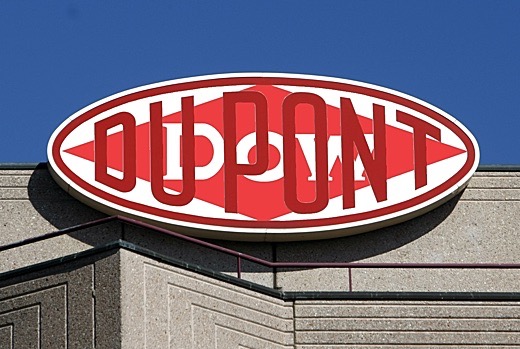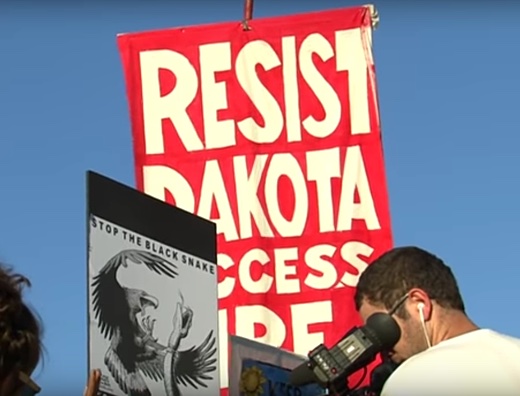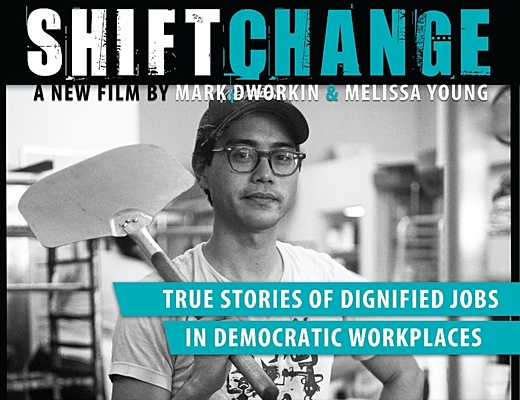SOURCE: Ken Taylor (
taylork021@hawaii.rr.com)
SUBHEAD: A new ag-chem corporation will emerge with $19 billion in GMO seed and pesticide sales.
By Staff on 11 December 2015 for Pacific Business News -
(
http://www.bizjournals.com/pacific/blog/morning_call/2015/12/dupont-dow-chemical-to-combine-in-a-130b-merger-of.html)
 Image above: Mashup of the logos of Dow and DuPont by Juan Wilson. From (http://blog.thomsonreuters.com/index.php/delaware-high-court-boots-argentines-asbestos-suit-dupont/).
Image above: Mashup of the logos of Dow and DuPont by Juan Wilson. From (http://blog.thomsonreuters.com/index.php/delaware-high-court-boots-argentines-asbestos-suit-dupont/).
DuPont and Dow Chemical Co., which both own seed operations in Hawaii, have agreed to an all-stock merger valued at $130 billion that will create a new company called DowDuPont, the two companies said Friday.
Reuters reports the two largest U.S. chemical producers will combine before splitting into three publicly traded companies that will focus on agriculture, materials and specialty products. The deal will require regulatory approvals.
Michigan-based Dow Chemical Co. (NYSE: DOW) and Delaware-based DuPont (NYSE: DD) are calling the deal a “merger of equals.”
The two companies were among the seed producers that sued Kauai County over a county ordinance requiring agribusiness companies to disclose their use of pesticides and the presence of genetically-modified crops.
DuPont to cut 5,000 jobs
SUBHEAD: It's a sign of weakness, not strength, that these two monsters are being joined at the hip.
By Joseph DiStefano on 11 December 2015 or Philly -
(
http://www.philly.com/philly/blogs/inq-phillydeals/Dow-DuPont-to-merge-then-split-into-3.html)
Dow Chemical Co., based in Midland, Mich., and DuPont Co., Wilmington, said Friday they will combine in a "tax-free merger" into one company, DowDuPont, then split the combination into three. They want to slice at least $3 billion in yearly expenses, shut offices and plants and lay off thousands, in hopes of driving up share prices and enriching investors.
DuPont merger statement here.
DuPont also said Friday that, even before the merger, it will erase around 5,400 of its 54,000 global employees. CEO Edward Breen plans to cut $700 million from spending next year, and pay $650 million for layoff severance to thousands of workers who will lose their jobs, plus $130 million for plant shutdowns. The companies employ around 100,000 worldwide, almost 1/10th of whom work in the Philadelphia area (list at bottom).
DuPont spending cuts statement here.
Also, Dow will absorb Dow Corning; statement here.
In remarks to investors, the bosses said they'd relied on advice from corporate raiders Daniel Loeb of the Tri Point hedge fund group, which owns 2% of Dow, and Nelson Peltz of the Trian hedge fund group, which owns 3% of DuPont, in designing the split-up, which they hope to conclude by late 2017.
The planned cuts include $300 million of the combined $3.6 billion a year the companies spend on research and development. Duplicate electronics factories are among the facilities likely to be closed, Breen said.
The move joins two 100+-year-old firms that grew rich building and acquiring chemical patents, developing processes and products they sold to armies, farms, factories, households and governments worldwide, employing hundreds of thousands of professionals and skilled workers, often creating toxic byproducts.
Dow boss Andrew N. Liveris, who told investors in a conference call today he's been trying "for more than a decade" to merge with DuPont, will be the combined firms' Executive Chairman. DuPont's new CEO Edward D. Breen, who will keep that title at the combined companies, cracked that he'd "coveted this deal for about two months," or since he got the top job at DuPont. But Breen also said he and other DuPont directors also "looked at every other variation that there could be around the world" in search of profitable buyers, sellers and partners.
Breen will oversee the two smaller of the three planned successor companies before hiring their CEOs; the largest group of companies will report to Liveris and keep the Dow name. The as-yet unnamed chief financial officer for the combined companies will report to Breen. Breen said Dow and DuPont "fit together like hand and glove."
The three successor firms:
- Pesticides and GMO crops - DuPont and Dow crop pesticides and genetically-modified seeds, with sales totalling $19 billion, will unite into an "Agriculture" company under Breen's oversight.
- Plastics and Construction Materials - DuPont's Performance Materials group will be folded into Dow's plastics, construction and consumer businesses, creating a $51 billion "Material Science" company under Liveris' watch.
- Electronics and Bioscience - DuPont's nutrition and health, enzymes and biosciences, safety and protection, and electronics and coummunications groups will be joined to Dow's electronic materials business in a "Special Products" group under Breen.
While the Ag merger "makes some sense," bond analyst Carol Levenson wrote in a report to clients of Gimme Credit LLC, "the Material Science company is mostly just Dow's commodities businesses and the Specialty company is mostly just DuPont's specialty businesses."
The Specialty Products company "kind of seems like 'All Other,'" UBS analyst John Roberts noted in the investor conference call. Liveris said it was Breen's idea to put that group together, and insisted they weren't "leftovers."
Breen said the group combines a string of "high R&D" businesses.
Breen promised to cut "duplication" but also to protect "the people inventing and making the product" as well as customer-facing salespeople. Other jobs are "fair game" for "attack," he added.
Analyst Jonas Oxgaard told clients of Sanford C. Bernstein & Co. that he's "disappointed that DuPont's best-performing Performance Materials segment" will be merged into Dow's lower-performing plastics group in the "Material Science" company. He urged the partners to "rethink" the way the companies will be divided.
The mergers and cuts are expected to translate to more job losses at DuPont's shrunken headquarters in suburban Wilmington. Sources at DuPont in Delaware tell me the Special Products business is the one most likely to remain based in Wilmington if it becomes a separate company.
Analysts also noted the combined companies will have to divide up multibillion-dollar pension, pollution, debt and tax liabilities. DuPont CFO Nicholas Fanandakis said he expects rising interest rates, and higher yields on bond investments, will help pay future pensions.
Liveris and Breen said they weren't too worried about U.S. Department of Justice antitrust regulators calling the merger uncompetitive; they expect to sell off any businesses that get in the way of approval.
But U.S. Senate Judiciary Committee Chairman Chuck Grassley, R-Iowa, said in a statement that the Dow-DuPont deal "demands serious scrutiny." He called on federal regulators for "vigorous enforcement of the antitrust laws," and added that he'll "be listening to Iowa farmers and consumers about any concerns they may have with this proposal."
Liveris said he plans to use Dow's 2009 purchase of Philadephia-based Rohm and Haas as a model.
While Dow shut some longtime Rohm and Haas plants and plans to pull the last of the headquarters staff out of Rohm and Haas' former landmark Philadlephia headquarters next year, Liveris said Dow made sure to preserve the guts of the specialty chemical maker, its "application development and the sales engine and the innovation engine."
By contrast, raw materials and service contracts are "a target-rich environment" for cost-cutting, Liveris added.
Everyone wants to cut "duplicative corporate services" -- but if the authors of this merger are serious about following consolidation with creation, vanished costs will "reappear times three," according to bond analyst Levenson.
"Mergers and spinoffs do not come cheaply," she added. "Is this a brilliant idea or just a way to generate investment banking fees?" She noted that Tyco bondholders had sued Breen over what they considered his unfair division of corporate debt when he dismembered that former conglomerate in 2007.
Hedge-fund investors Loeb and Peltz had expressed impatience with the chemical giants' large management structures and the slow or hard-to-measure pace of scientific research and product development, and called for asset sales and cost cuts that will make it easier for them to extract cash.
While officials at the companies' pesticide competitors, including Sygenta, Monsanto and FMC, have described potential merger talks as near-universal through their industry as global demand has fallen over the past two years, Liveris told investors that DuPont and Dow directors have been in direct talks since at least last winter, when Breen's predecessor, Ellen Kullman, was in charge.
The companies insist theirs will be an unusual "merger of equals" rather than an acquisition. "This transaction is a game-changer for our industry and reflects the culmination of a vision we have had for more than a decade to bring together these two powerful innovation and material science leaders," said Liveris in a statement.
For now, DowDuPont plans to maintain both offices as "dual headquarters." The new board will include 8 directors from each company. They have not yet been named.
DuPont has bought and sold hundreds of companies since the 1920s. Other former DuPont divisions or affiliates that are now separate companies based in the Philadelphia area include Axalta, Endo and Incyte. Earlier this year, DuPont spun off money-losing chemical units into a new company, Chemours.
DuPont facilities in the Philadelphia area employ around 7,000:
Research and Development (pesticides and seeds) – Stine-Haskell Lab, Newark, Del.
Research and Development (many products) -- Experimental Station, Wilmington
Plastics and Polymers – Pencader and Tralee Park plants, Newark, Del.
Automotive, specialty chemicals, pesticides -- Chambers Works, Deepwater, NJ
Headquarters and offices – Chestnut Run, Wilmington
Contaminated, shuttered manufacturing site -- Repauno, N.J.
Hotel du Pont, DuPont Country Club, Brantwyn Estate -- Wilmington
Dow Chemical facilities in the Philadelphia area employ around 2,500:
Northeast Technology Center – Collegeville
Paint/Engineering – Bristol
Paint Quality Institute – Spring House
Northeast Technology Center -- Collegeville
Insulation - Pennsauken
Electronics, computer chip materials – Newark, Del.
Philadelphia Office – scheduled to close in 2016
Former facilities (a sampling):
DuPont Philadelphia Works -- shut in 2009, now part of University of Pennsylvania
DuPont Edge Moor (Del.) works -- spun off with Chemours, scheduled to close (DuPont still maintains a waste facility nearby)
Dow (ex Rohm and Haas) division headquarters -- Independence Mall, Philadelphia (scheduled to close in 2016)
DuPont and Dow both have shuttered former chemical operations in Northeast Philadelphia
DuPont's weakness made the deal
SUBHEAD: The merger of DowPont's agriculture businesses allows them to combine resources to compete with industry leaders Syngenta and Monsanto.
Downstream from Friday's announced merger between DuPont and Dow Chemical, this much seems clear: DuPont’s Delaware operations will see a reduction in high paying jobs and the loss of many functions associated with a headquarters operation.
Many in the First State were caught off guard by the announcement and are slowly coming to terms with the possibility of a Delaware without DuPont for the first time since Thomas Jefferson was president.
But for those who have watched the worldwide agriculture market, the merger was anything but a surprise.
The companies will form DowDuPont, the world's second largest chemical business behind BASF. For now, it will maintain a headquarters in each company's hometown; just outside Wilmington for DuPont and Midland, Michigan, north of Detroit, for Dow.
DuPont, separately, reported it will eliminate 5,000 positions, or 10 percent of its global workforce. Some of those layoffs will be in Delaware, where it has about 7,000 workers. The move is part of the company's plan to slash $1.6 billion from its budget by 2017.
As corporate profits waned in the wake of a global agricultural market downturn, a mega-merger like the one between DuPont and Dow became inevitable.
The industry is producing its lowest returns in nearly a decade. Crop and soybean prices have dropped, while land and seed prices have increased, cutting into farmers' profits. Since 2012, individual farm profits averaged $33,000 per year, according to the Center for Farm Financial Management.
That is more than 50 percent less than the $67,000 in average annual profits they enjoyed during agriculture's boom years between 2007 and 2012.
U.S. companies with agriculture stakes have paid the price. DuPont's agriculture unit generated an operating loss of $210 million in the third quarter, $154 million worse than the loss in the third quarter of 2014.
"Corn and soybeans in the U.S., two of the most important row crops there are, have seen their value cut in half or greater in the last two years," said Allan Gray, director of the Center for Food and Agricultural Business at Purdue University. "Farmers have certainly seen their revenue cut in half."
This is not a United States-only phenomenon, however.
DuPont's heavy exposure in Brazil, which recently had its credit rating reduced to "junk" status by Standard and Poor's, is cited as the primary issue afflicting the Wilmington-based company's balance sheets.
Brazil's economy is plagued by an inflation rate that is approaching double digits. Demand for its two biggest exports, coffee beans and sugar, have fallen and the drop in commodity prices has undermined the nation's oil industry. Complicating matters is the sluggish economy of Brazil's largest trading partner, China.
The Brazilian recession has made it difficult for its farmers to afford the seed and crop protection products offered by U.S. agricultural companies like DuPont. With profits shrinking and credit difficult to obtain, Brazilian farmers are growing fewer crops and needing fewer supplies.
About 6.7 percent of DuPont's 2014 revenue came from Brazil, according to regulatory filings. When the company lowered its earnings outlook for 2015 in October, it placed the blame squarely on Brazil.
"The revised outlook primarily affects continued strengthening of the dollar versus currencies in emerging markets, particularly the Brazilian real, and a further weakening of agricultural markets, primarily in Brazil," the company said while reducing its outlook to $2.75 per share from its original estimate of $3.10 per share.
Despite the problems with Brazil, DuPont continues to invest in the country. DuPont's Pioneer unit, which produces hybrid seeds, maintains a heavy presence there. In October, DuPont announced plans to build a $22 million seed treatment laboratory in Brazil.
Matt Arnold, an analyst with Edward Jones in St. Louis, said Brazil had been a strong market for DuPont and could again be a growth region for the newly consolidated company.
"I think those Brazilian challenges will be prove to be short-lived," he said.
Why merge?
Exposure to Brazil has also impacted DuPont’s rivals. Syngenta AG, which is also very active in Brazil, saw its revenue drop 12 percent in the third quarter to $2.6 billion, due mainly to reduced commodity prices in that country.
Dow Chemicals' Latin America exposure was one of the reasons its AgroSciences business lost $2 million in sales between the 2014 and 2015 third quarters. The units' operating earnings before taxes was a loss of $39 million because of Latin America. Monsanto Co. is less active in those markets, but still has been impacted by the industry downturn. The St. Louis-based company will eliminate 2,600 jobs to save $300 million annually by 2019.
A weak agricultural market across the U.S. and abroad has left industry players with little choice but to pursue consolidation. Smaller returns have left companies with little to invest in research and development, making a combination of efforts attractive.
Mark Gulley, an industry analyst and principal at Gulley & Associates, a chemicals consulting firm in New York, said the merger of Dow and DuPont's agriculture business allows them to combine resources to compete with industry leaders Syngenta and Monsanto.
Gulley said that DuPont has "never really scored" in its efforts to develop new genetically modified seed traits – herbicide-resistant seeds, for example – and would benefit by adding Dow AgroSciences technology.
The $130 billion merger of Dow and DuPont may have surprised some, but industry watchers had been expecting a major consolidation announcement for some time. Monsanto in August withdrew its $46 billion bid to acquire Syngenta, the world's largest pesticide maker after the Swiss company refused to negotiate. Syngenta said the offer didn't fully reflect its prospects and created antitrust risks.
The China National Chemical Corp., or ChemChina, a state-owned Chinese company is said to be pursuing Syngenta. ChemChina is not a major agricultural player yet, but the company has been investing in pesticides.
Monsanto CEO Hugh Grant said earlier this year he was still searching for deals, calling industry consolidation “inevitable.”
"I think some kind of merger among the big six was inevitable," said GianCarlo Moschini, an economics professor and chair of the Science and Technology Policy unit at Iowa State University. "I am little surprised it is these two because, for a while, it seemed like it was going to involve Monsanto and Syngenta. I wouldn't be surprised if there was more to come."
One of the reasons Dow and DuPont came together is because their agricultural units are compatible. DowDuPont would control roughly 40 percent of the American corn-seed and soybean market and 17 percent of global pesticide sales.
Currently, Monsanto is the largest player in the seed market with nearly $5 billion in sales, accounting for 23 percent of the market.
The increased market share of DowDuPont will likely pass antitrust scrutiny because it doesn't give the newly merged company an overwhelming edge in any one sector.
"What each one is good at is somewhat different," Moschini said. "They both have chemicals but I don't think there's much overlap for them to compete head-to-head."
Arnold said the reduced possibility of regulatory hurdles is one of the reasons why a Dow and DuPont merger worked rather than either company pursuing another rival.
"I don't think Monsanto and DuPont or DuPont and Syngenta would have pared well," he said.
"They would have created an antitrust behemoth in the seed market."
Kullman vs. Breen
Formed as a gunpowder manufacturer in 1802, as DuPont grew so did Delaware.
Three DuPont cousins assumed control of the company nearly a hundred years later and based it in Wilmington instead of New York or Philadelphia. The cousins revolutionized downtown Wilmington through the construction of the DuPont Building, which opened in 1907. More than a corporate headquarters, the DuPont Building expanded to include an upscale hotel, and a Broadway-style theater.
The DuPont name is everywhere in the state. It adorns hospitals, schools, country clubs, and highways. Towns were transformed as Wilmington became the "The Manufacturing Capital of the World" and Seaford was known as "The Nylon Capital of the World." During World War I, the company built suburban developments throughout New Castle County.
At its peak in the mid-1980s, DuPont employed roughly 26,000 in the state.
Now, Delaware must adjust to the once thinkable – the likely end of DuPont in Delaware.
Had the Dow deal not materialized, DuPont would have likely survived the downturn following the path laid out by Ellen Kullman, the company's former CEO. Kullman, who was forced out by the board in October, was replaced by Ed Breen a man with a reputation for mergers and acquisitions forged during his time at the helm of Tyco International Ltd.
Kullman had implemented cost-cutting measures to ride out the cyclical agricultural market, but had not pushed for any significant changes. It was this plan that helped Kullman defeat activist investor Nelson Peltz's efforts to gain four seats on DuPont's board.
In contrast, Breen discussed an agricultural acquisition or divestiture in his first earnings call with Wall Street analysts, mere weeks after being appointed CEO. Some thought DuPont would likely pursue a joint venture, rather than a massive merger.
If DuPont remained a stand-alone company, it would likely be a little leaner by selling of some business units. However, the company would have remained largely intact until the market rebounded.
"This isn't a deal that had to happen," Arnold said. "They were already on a path to ride out the down cycle."
Strategic mergers during an economic downtown typically position the combined company as a stronger entity poised to take advantage of improved market conditions. By merging during this period, Dow and DuPont no longer have to settle for just surviving the downturn, but can boast they emerged as a stronger entity.
It also creates opportunity to lower the companies' cost structures so the new business is better prepared when the market returns.
"I think this merger is going to reduce costs and allow DuPont and Dow to combine their best and brightest, which ultimately will result in better products at a faster pace," Gray said
.













